One of Mercedes’ most successful vehicles ever was the M-Class SUV, which Mercedes no longer makes (the last year was 2015). It place has been taken by two SUVs – both of them so similar it’s hard to tell them apart.
One – the GLE – is a little bit larger than the old M. The other – the GLC – is a little smaller.
But it’s just gotten a little bit larger.
And a little bit smaller (under the hood).
The GLC is a slightly-larger-than-compact-sized SUV that’s a little bit smaller than the old M-Class SUV and the current mid-sized Mercedes GLE SUV. Both differ from crossover SUVs in that the GLC and the GLE are based on rear-drive (rather than front-wheel-drive) layouts. The GLC differs from the GLE chiefly in that it does not offer third row seating nor an optional – stronger – engine.
It’s also less expensive for that reason.
Base price for the rear-drive GLC 300 is $47,100 – vs. $57,700 for the GLE350. Interestingly, both the GLC 300 and the GLE 350 come standard with the same 2.0 liter turbocharged four cylinder engine. (When the ML 350 was still available, the “350” denoted the 3.5 liter V6 this SUV came standard with.)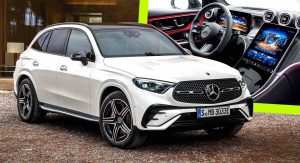
Equipped with the optional 4Matic all-wheel-drive system, a GLC300 stickers for $49,100 – vs. $60,200 for the GLE 350 4Matic.
What’s New For 2023
The GLC gets a little larger – and roomier. It is now about two inches longer than it was before and its cargo area has bee expanded by about 4 cubic feet.
It also gets a little smaller – in terms of what’s no longer available, at least for the moment. The ’22 GLC was available with a turbocharged V6. And – before that – a V8.
The ’23 GLC only offers a turbocharged four – supplemented by a mild-hybrid system similar to the one that’s available in the GLE – with its optional turbocharged (and in-line) six cylinder engine. It does not propel the vehicle; it powers accessories when the engine is cycled off during deceleration, coasting and idling. The purpose of that being to reduce fuel consumption and emissions.
What’s Good
A slightly smaller version of the slightly larger – and much more expensive – GLE.
Slightly larger (and roomier) than it used to be.
S-Class looking interior and tech.
What’s Not So Good
More engine isn’t available.
Driver assistance tech can be overly-assisting.
The superb massaging seats that are available in the GLE aren’t offered in the GLC.
The GLC comes standard with a 2.0 liter, turbocharged four cylinder engine that produces 255 horsepower and 295 ft.-lbs. of torque at 2,000 RPM. The engine is teamed up with a nine speed automatic and a mild hybrid system that cycles the engine off when its power isn’t needed to propel the vehicle. When the engine is off, accessories are powered by the 48 volt electric system, which (in turn) is powered when the engine is running – and charging the battery that stores the power to run the accessories when the engine’s off.
The idea here is to uptick gas mileage – which is 23 city, 31 highway for the 4Matic-equipped GLC300 – and reduce emissions (of carbon dioxide gas) without costing power/performance.
It does a pretty good job on that score.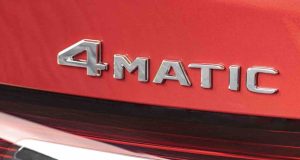
The GLC can get to 60 in just over six seconds, which is about 1 second quicker than the old (2015) ML350, which came standard with a 3.5 liter V6 and 302 horsepower. It also only managed 18 city, 24 highway (17 city, 22 highway for the 4Matic-equipped version).
However, the GLC’s maximum tow rating is just 3,500 lbs. The old ML350 could pull more than 6,000 lbs. – and so can the current GLE, when you buy the GLE 450 – which comes standard with a turbocharged in-line six (and 362 horsepower) paired with a similar mild hybrid set-up.
Benz also offers a V8-powered version of the GLE – the AMG GLE 63 S – which you can read more about here.
Benz used to offer a V8 (and 469 horsepower)in the GLC, too. That was back in 2021. Benz also used to offer a turbocharged V6 in the GLC – in the 2022 AMG GLC 43. It offered up 385 horsepower.
It begs the question: Why doesn’t Benz offer either anymore?
The answer probably has to do with the numbers. The dearly departed AMG GLC 43 only managed 18 city, 24 highway – which seems almost Prius-like when mentioned in the same breath as the V8-powered GLC 63’s 15 city, 22 highway.
It’s not that people who buy high-powered vehicles like the AMG versions of Mercedes vehicles care about gas mileage uber alles. Or even a little. If they did, they’d buy a Prius. People who buy performance vehicles care about power – and performance – uber alles.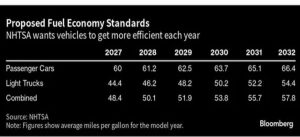
The problem is that Mercedes has to care about gas mileage (and emissions of gasses, such as C02) and V8s and V6s that make lots of horsepower use (and “emit”) more than the government likes. And when the government doesn’t like something, it makes its displeasure clear by punishing the doing of that something. Mercedes – and any other car manufacturer – that doesn’t put gas mileage uber alles gets hit with fines for “noncompliance” and these are passed on to buyers in the form of higher sticker prices for everything Mercedes sells. And higher prices are a problem – even for a luxury car brand – because if the price gets too high, fewer will buy.
So Mercedes offers fewer engines that don’t “comply.”
And that’s why the ’23 GLC has only one (small) engine vs. the three that used to be available.
The GLC’s 2.0 liter engine doesn’t sound like much engine – and it doesn’t sound like much engine.
It’s mostly as quiet as an electric motor, especially when it isn’t running. You won’t hear that, either – as the off-on transitions are not noticeable by ear or even by feel, except when you’re already stopped, as at a red light. Then you may notice the engine isn’t running – because the tachometer isn’t moving. It moves, again, when the light turns green and the engine is quick-started by the high-powered, 48 volt flywheel-mounted generator/starter system. It has the power – the leverage – to turn the engine over very fast and very quickly, accounting for the almost-instant (and almost imperceptible) re-starts.
But the thing you will notice is that the GLC isn’t slow – even though its engine is very small relative to the size (and weight) of the GLC, itself. It seems incongruous to task 2.0 liters with moving two tons of SUV. In the not-so-distant past, a vehicle this heavy – and prestigious – would have come standard with at least a V6 in the range of 3.5 liters.
And the old ML350 did.
What’s remarkable is that the new GLC is quicker – even if it doesn’t sound like it is.
The ML350’s 3.5 liter V6 made a great sound when you floored the accelerator pedal. But it took longer to accelerate than the GLC does. The GLC also responds with more authority, with less pressure on the accelerator pedal – because its small four makes more torque (295 ft.-lbs.) much sooner (at 2,000 RPM) vs. the old V6’s 273 ft.-lbs. at 3,500 RPM.
You will probably not miss what you cannot hear.
There is one hair in the soup, though. It is the “advanced driver assistance technologies” that mar what is otherwise a brilliant demonstration of less being more. There is the “steering assist” – as its is styled – and what it does is interferes with your steering, by attempting to “correct” your steering. You will feel the wheel turning itself – with some force – as if someone else’s hand is on it. And in a way, it is. But the hands is an electric motor connected to the steering gear – that regularly second-guesses your inputs. This having to fight the vehicle over directional control gets tedious quickly.
There is also the “emergency braking” system. The idea here is that the vehicle will slam on the brakes if it sees the need – and it senses you haven’t. The problem – which I experienced – is that the system sometimes sees a need when there isn’t and slams on the brakes, when unexpected. This isn’t just unsettling. It could be unsafe – if there’s someone behind you not expecting you – that is, the vehicle – to slam on the brakes suddenly when there’s no need to even slow down.
This happened to me while merging with traffic.
There was a tractor trailer ahead of me in the lane I was merging with, but I wasn’t bearing down on it at high speed and wasn’t more than three car lengths close to it. But the GLC decided there was an “emergency” and applied the brakes, hard. Just for a brief moment – but being hurled forward in the seat for no reason is unsettling. And – luckily – the driver of the vehicle behind me was paying attention.
Human beings have their flaws. But so does “technology.” A competent, paying-attention driver doesn’t need “assistance.” Such “assistance” being akin to pushing a wheelchair on a man who can walk unaided.
At The Curb
When Benz made the ML350, it was easy to tell what it was a glance because – at the time – Benz didn’t make other SUVs that looked almost the same that were a little bit larger and a little bit smaller.
Now Mercedes does.
The GLC is a little smaller than the GLE – and it is a little larger than the GLB, which is Mercedes’ smallest SUV. That’s three to choose from!
What the GLC brings to the table is more gravitas – vs. the front-drive-based GLB, which comes standard with less power (221 horsepower) – and a lower price vs. the GLE, which offers more passenger-carrying capacity if equipped with its available third row. You can’t get that in the GLC – but if you don’t need a third row, you won’t miss it.
Interestingly, the GLC has less room for cargo than the smaller GLB – which touts 22 cubic feet behind its second row and 62 cubic feet with the second row folded down. That is a lot of cargo room for a small crossover – which is what the GLB actually is, even though it looks like its SUV siblings. The larger GLC has 21.9 cubic feet of space behind its second row and maxes out at 59.3 cubic feet – because it is an SUV. The rear-drive layout eats up space in the rear; that’s why SUVs usually have less space for cargo than same-sized crossovers (and sometimes, less space than smaller crossovers).
If you need more space – for cargo – the GLE has 33.3 cubic feet behind its second and 74.9 cubic feet with those seats folded. If you get the third row, though, you won’t have as much space – unless you don’t use those extra seats.
The GLC is not Mercedes’ most expensive model but it comes standard with what used to be offered only in the most expensive Mercedes models: A flat screen (LCD) instrument cluster and another (even larger) 11.9 inch flat screen off to its right that looks and works just like a large smartphone. The issue here is that everyone has a smartphone – and the $50 ones look pretty much the same as the $1,000 ones.
And almost everyone has essentially the same in their cars now, too.
While the GLC’s is larger than most and has additional features the cheaper ones lack – such as 3D mapping/augmented reality for the GPS – it won’t be long before everyone else’s has those features, too. LCD screens all come from Chyna and they’re all getting cheaper.
Mercedes and the other high-end brands might want to get ahead of this and revert to offering what lesser (cheaper) cars can’t offer – such as jeweled (like a Rolex watch) instruments trimmed with polished metal and faced with glass rather than plastic.
Such would complement what is otherwise a beautifully finished interior that doesn’t look or feel cheap.
The Rest
The GLC does not come standard with seats that cool as well as heat. That’s a bit of an omission for a car that stickers for just shy of $50k to start – given how many cars that sticker for $35 or so to start do come standard with heated and cooled seats. They are, however, available as a stand-alone option and you can also get heated rear seats (this feature is uncommon in cars that cost $35k). 
However, you cannot get the superb massaging seats that are available in the GLE and other higher-end Benz models.
Also, if you want a GLC in any other color than black, it costs extra.
Not a little, either.
The Bottom Line
The old ML350 was a kind of one-size-fits-all SUV. The GLC is an SUV that fits some better than others. And for the others, Benz has the GLE – and the GLB.
. . .
If you like what you’ve found here please consider supporting EPautos.
We depend on you to keep the wheels turning!
Our donate button is here.
If you prefer not to use PayPal, our mailing address is:
EPautos
721 Hummingbird Lane SE
Copper Hill, VA 24079
PS: Get an EPautos magnet or sticker or coaster in return for a $20 or more one-time donation or a $10 or more monthly recurring donation. (Please be sure to tell us you want a magnet or sticker or coaster – and also, provide an address, so we know where to mail the thing!)
If you like items like the Keeeeeeeeev! t shirt pictured below, you can find that and more at the EPautos store!






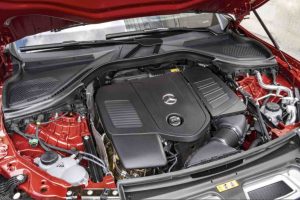




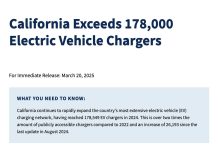

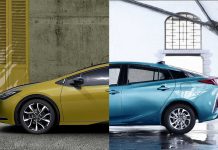

There is a GLA though. I think it’s a bit smaller than the GLB. The GLA has slightly different body styling and I think is more attractive but GLA/GLB are very small.
The GLS, which I think you’ve reviewed recently, is monstrous and comes with most features in the base trim. I like the GLE because it is larger but not monstrous like the GLS and it has enough features available (nearly everything that is available in GLS can be optioned on the GLE) and it has several engines available including a V8 (if you can afford it — I can’t).
It seems like MB intends to keep offering ICE vehicles, at least for the time being. Maybe they’ll have to stop but unlike manufacturers like Audi, they don’t seem to be as hell bent on the entire thing.
Also the GLC seems to be comparable to Audi Q5 and BMW X3. If you look at the specs, GLE is more like Q8 (i.e., better than Q7 in most respects) and certainly matched by BMW X5.
Along those lines, Q8 is where Audi tops out unless you go sport (i.e., SQ8 or RSQ8). There is no Audi equivalent of GLS. If you want to compare Audi SQ8 or RSQ8 to Mercedes then you’re talking AMG and they are, once again, out classed.
GLE AMG 63S is much better car than SQ8 and RSQ8 is the only thing that comes close.
GLS AMG 63 cannot be matched by Audi anything. I think, if anything, BMW is a closer competitor but I’m not very familiar with their models.
Hi XM,
Yup! The GLE 63 S is Hell on wheels – in a complimentary way. What a piece of work! This GLC is a rig for someone who isn’t looking for a velvet covered sledgehammer. It’s also a good size for someone who wants more than a compact but doesn’t want much more than that.
CAFE is like dumbing down education and military standards. Rule to the lowest denominator. Eventually cars, like students and recruits, will barely worth the name.